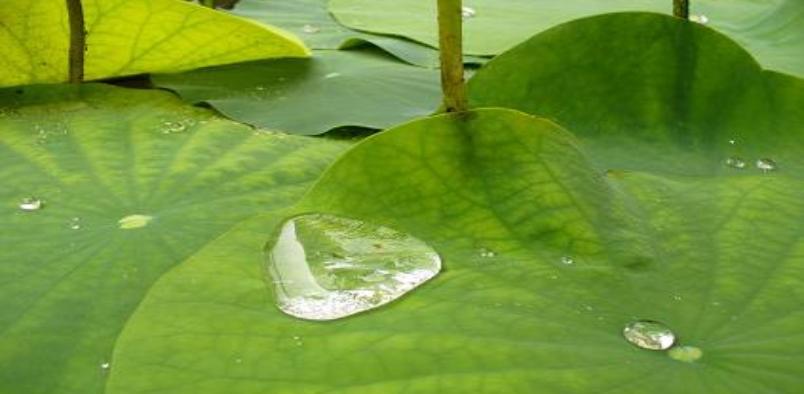How does a lotus leaf protect your car?
Something everyone on the planet has first hand experience with is cars. With harsh weather, sunshine, road salts and other chemicals being thrown at your vehicle, literally at breakneck speeds, protecting the paint and underlying metal is a big challenge. Once the clear coat or paint starts eroding, your expensive vehicle starts looking bad. Or worse, the metal starts corroding… So how does a lotus leaf protect the paint? Is it some new kind of vegan wrap? No, not exactly.
The surface of a lotus leaf actually repels water. It’s how the giant leaf stays afloat and shields the fish underneath from the sun and other predators. By studying and learning from nature, biologists and chemists have been able develop amazing new nano-coatings that repel water, oils and other undesirable elements to better protect surfaces, create new capabilities and make life better.
New nano-coatings can give painted metals, plastics and other materials super hydrophobic, oleophobic and even antistatic properties. Imagine a car exterior or interior that repels water and oils making cleanup faster and easier. That means it stays cleaner longer, uses less soap or detergents and requires less scrubbing or washing. What if this “miracle coating” was permanent or lasted for years? That would save a lot of time and money and be a whole lot better for the environment!
With billions of cars on the road, this is a BIG deal and the industry is taking off. Nano-coatings when applied properly, put a very thin, typically clear or invisible layer that molecularly bonds to the substrate, e.g. painted metals, plastic, fabric, etc. For car exteriors, silicone dioxide and ceramic blends are becoming popular due to the hardness and heat resistance. The value of the hardness can tend to be overstated though. Any material can scratch when scraped against a similarly hard material or hit with enough impact. Clear coatings are mostly silicone dioxide or some type of clear substance with other “hardeners” added. They are not 100% ceramic or even diamond for that matter, else they would be opaque (not clear). So, a small rock can certainly scratch the coating or dent the underlying paint and metal. BUT, it will certainly reduce the scratches, depending on the materials and concentrations in the coating. Where the hardness will be most beneficial is protecting against everyday use like fingernail scratches at the door handles and cloth scratches from washing or drying. Even soft sponges trap dirt. Unlike waxes, swirl marks should be a thing of the past as buffing is no longer necessary.
The biggest benefit comes from the hydrophobic properties of the nano-coating. The ability to repel water or oils or other dirt elements keeps the surface cleaner, longer. And when cleanup is needed, it’s a lot easier as the water droplets have less surface area in contact with the surface meaning less hard calcium buildup and less dirt to clean. That means, fewer chemicals, milder, more sustainable soaps, less scrubbing and fewer scratches wearing down the paint. Essentially and a much longer lasting beautiful shine without the hassles. Best of all, nano-coatings are inexpensive. Some even last for years as opposed to weeks or months like waxes and sealers. At the low cost, there’s really no reason not to add nano-coatings to protect your investments.
PermaClean Auto 9H is a unique silicone/ceramic hybrid polymer nano-technology that is hard, but provides added elasticity. It does not require special applicators as it can be sprayed or wiped on in minutes by any consumer. It dries in 5 minutes and cures in 24 hours (faster under heat lamps). It has a special benefit of adding temperature resistance up to 500C (932F) and UV protection to save your investment from baking in the sun. It’s highly durable and has been tested to last for 5-6 years. Of course, treating a new car or having the paint re-conditioned by a pro before hand is ideal. 3fficient recently launched an entire line of specialty nano-coatings that add amazing properties to everyday surfaces like windows that reject solar heat, kitchens that reject bacteria, fabrics that reject spills and cars that stay cleaner longer.
Important note. When comparing products, remember to compare features and durability first. When comparing price, always calculate the cost per coverage area ($/SF) and how long it will last – not the cost per ounce or bottle. Some cheaper products don’t last very long and many are very expensive for the limited area they cover.




Leave a Reply
Want to join the discussion?Feel free to contribute!